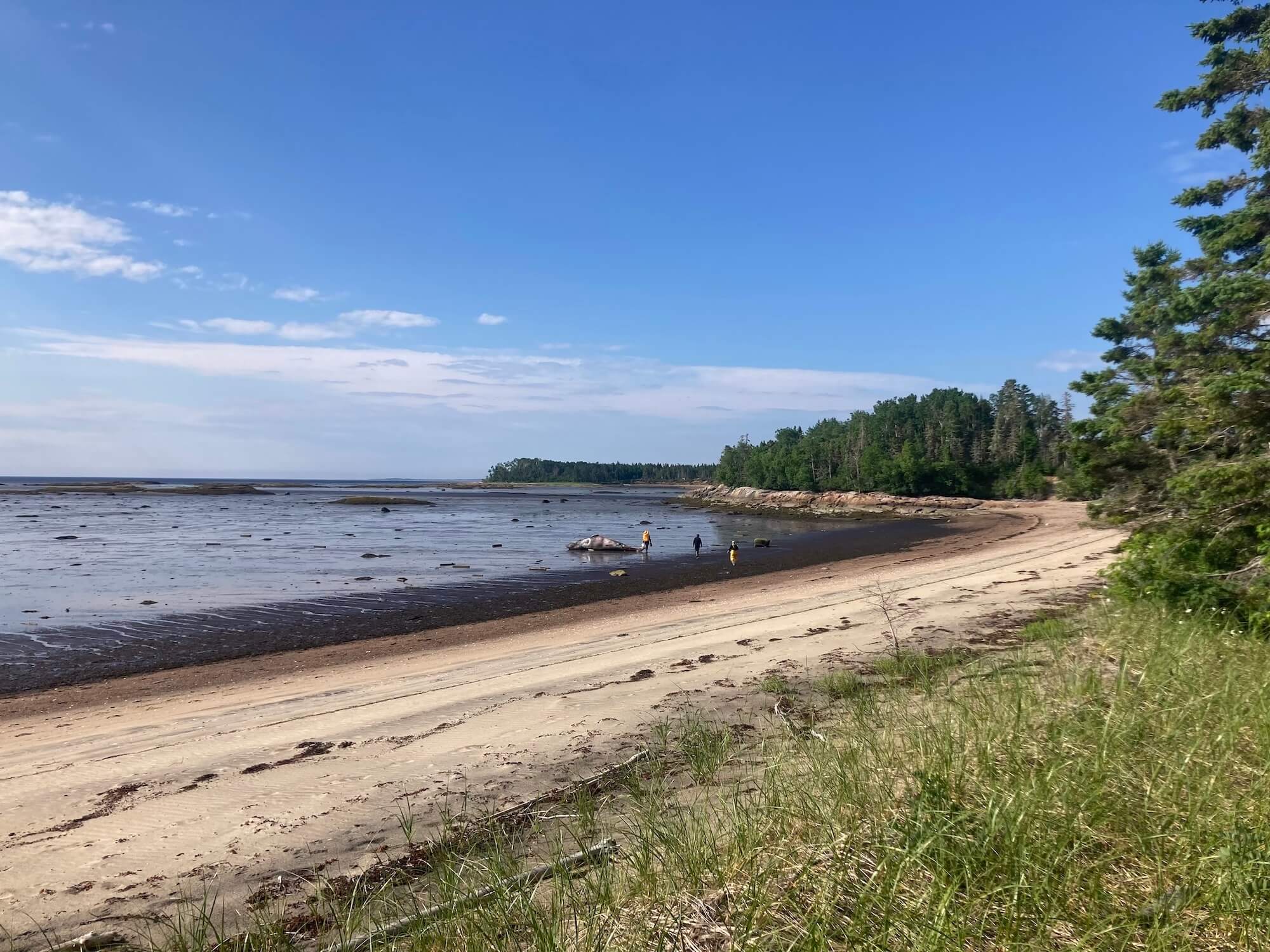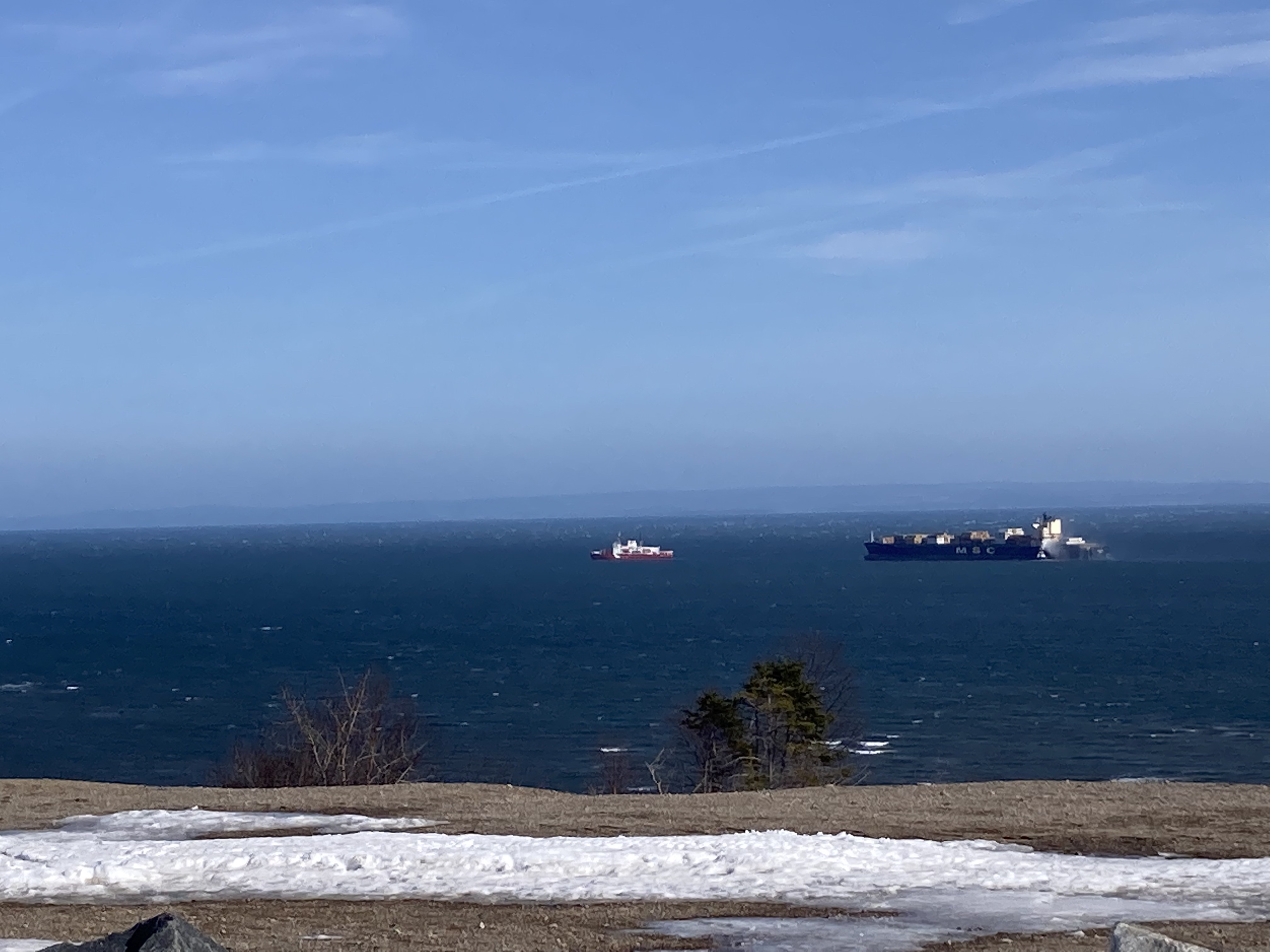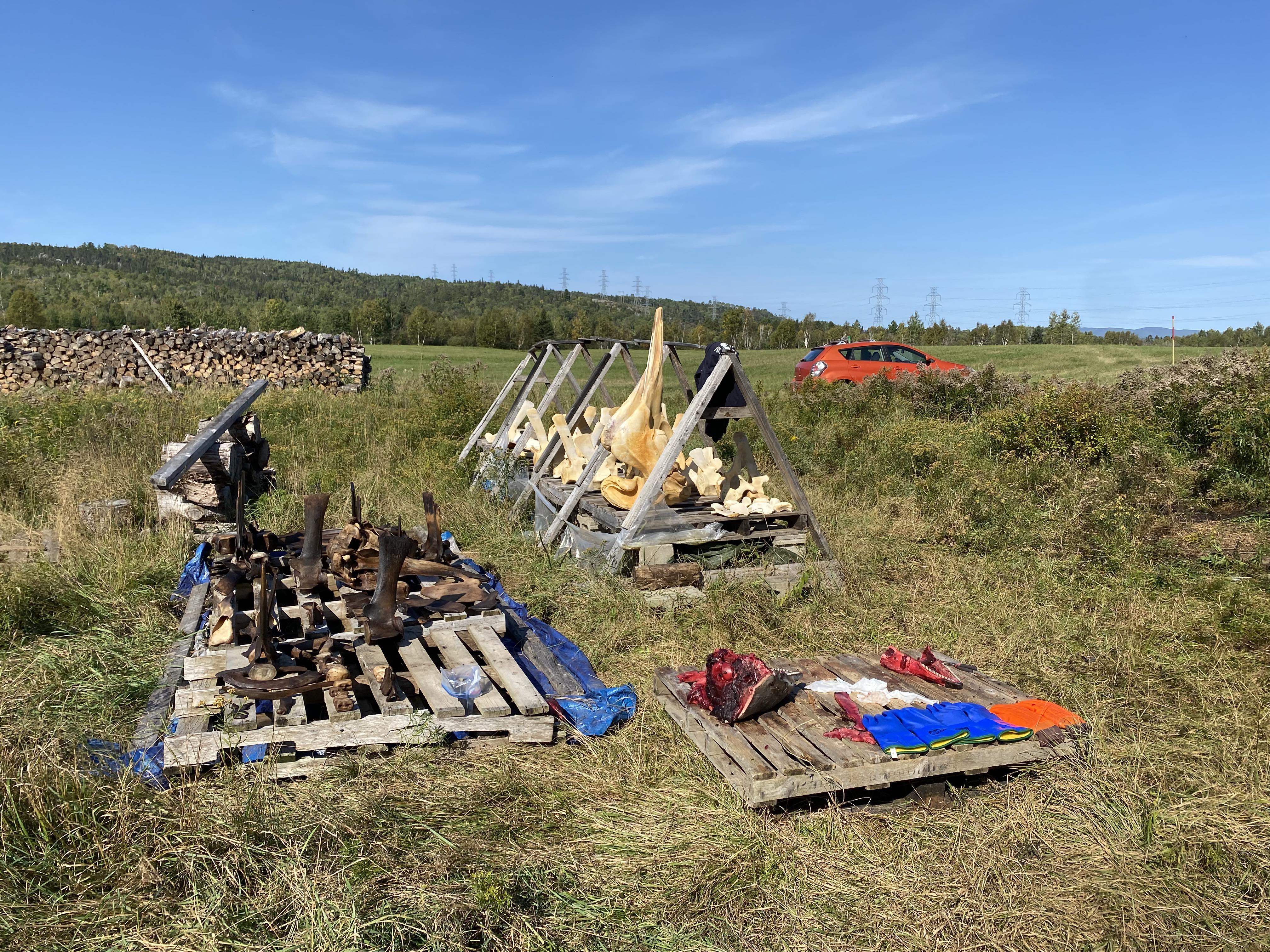We are in the 4th week of field work for the St. Lawrence beluga behavioural study. We have gone out on the water on two days during which we logged 9 hours of observations for 15 hours at sea.
We first explored the Saguenay Fjord sector, from Caribou-Qui-Pisse Falls to Baie Sainte-Marguerite. We also patrolled the waters of the municipality of Petit-Saguenay, more specifically around Pointe aux Crêpes. We later explored the mouth of the Saguenay Fjord off of Baie-Sainte-Catherine and as far as east-central Île Blanche. The weather during the last two excursions was problematic: poor visibility, periods of fog and rain, strong waves and heavy cloud cover. In total we observed 3 herds numbering about 15 adults and gray young as well as a herd of 80 individuals composed of females, grays and one calf. The animals were rather dynamic: surface activities, milling (repeated diving and resurfacing at the same spot), vocalizations and multidirectional movement.
Tuesday July 21, 2015 The numerous waves form whitecaps, complicating our task of spotting belugas under the circumstances. Nevertheless, we manage to get a number of photos of belugas showing distinctive markings. Within the herd we recognize Céline, who is swimming with her calf which is at least one year old. The latter has a deformity that makes it appear hunchbacked, a little like Pascolio, a well known female in the Saguenay sector that suffers from lordosis, i.e. a concave curvature of the vertebral column. A number of belugas showing deformities also found in humans (lordosis, scoliosis) frequent the waters of the St. Lawrence and the Saguenay. Pascolio, Scolio, Néo and others are more easily recognizable by this characteristic, but photos are often necessary to confirm an identification made in the field.. Then, toward the end of our observation, we encounter two “grays” that we had not yet seen this season that are moving in the opposite direction of our herd. They quickly swim away, leaving the herd behind.
Thursday, July 23, 2015: We observe a large herd of some 80 individuals, highly dynamic and active at the surface. As they are vocalizing quite a bit, we decide to drop our hydrophone into the water to record the underwater sounds. The herd splits into groups of about a dozen individuals and it is increasingly difficult to keep count. We snap off a few photos when we spot an individual with a very distinctive dorsal crest. It makes for a good candidate for a biopsy, which we complete successfully.
Here is the star observed this week: Céline





